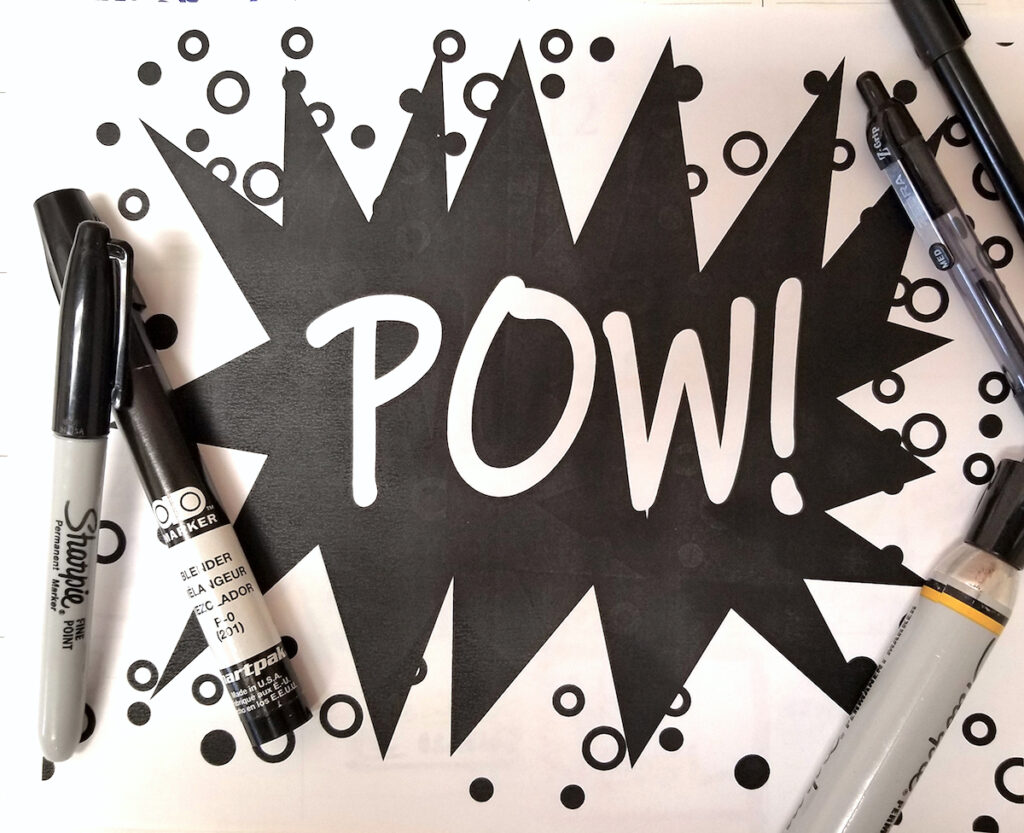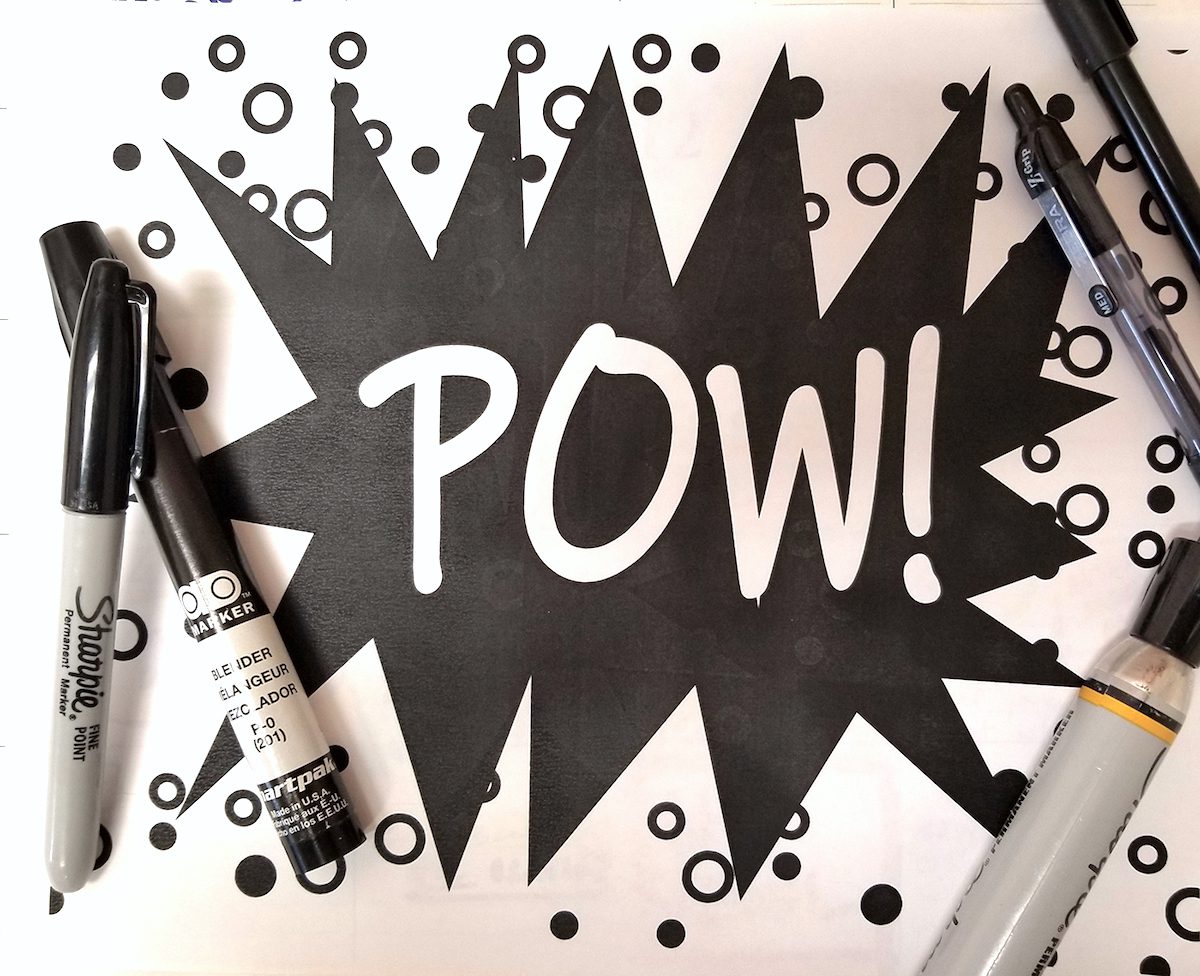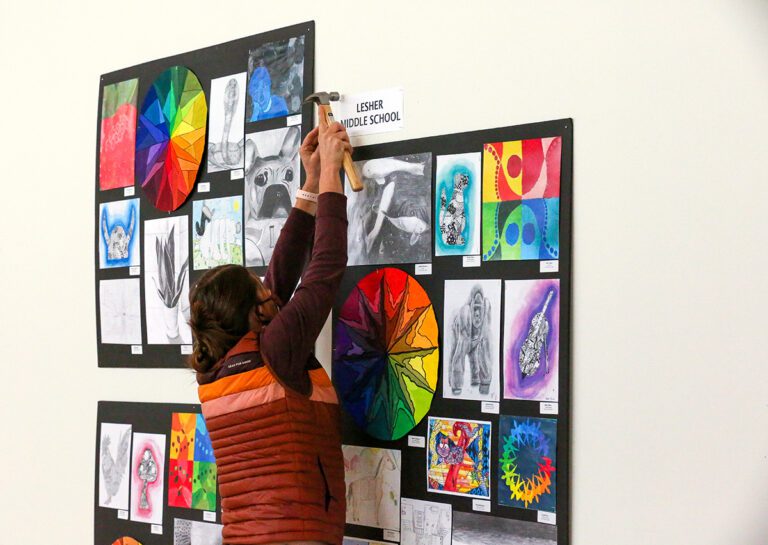Administrators often call on art teachers when they want a public art display in the building, art for their office, or the students to participate in an arts activity for an assembly. We swoop in, do an insanely good job, save the day, and return to the normalcy of our rooms.
Thank goodness they ask us because we are notoriously stylish people with a student following and an eye for design and aesthetics. Imagine what that mural would look like if left to someone else. But underneath your apron, you have a set of superpowers that are honed in the art room and can be incredibly beneficial to supporting the larger school.
Here are 5 skills you already have just waiting to be unleashed on the rest of the building.

1. Super Creative Speed
Organizational leaders are starting to realize (finally!) how valuable it is to have creative people in the room, regardless of their specific area of expertise. Daniel Pink has even referred to the MFA as the new MBA. As art teachers, our super speed is thinking quickly to develop multiple ideas and solutions.
School leaders and colleagues need your brain to generate ideas and provide new answers. Sound familiar? This is what you do as an artist. So, the next time a committee is being formed or your principal is working on school improvements, think about how creativity could add value to the process and further the end result. Share your knowledge of Design Thinking and strategies for brainstorming with colleagues. Use these skills to solve problems and develop ideas.
This is also an opportunity for you to take the lead. Guide your administration and/or colleagues through the ideation process. Being in the driver seat is a great way for you to develop professionally. It will demonstrate your value in a new way to your administration and colleagues all while supporting students.

2. Super Voice of Advocacy
If the idea of taking the lead scares you, remember you are already a leader as an advocate for arts education. Being an advocate has honed your super voice, and you now have the ability to communicate effectively in other facets of your work.
Channel your advocacy skills when you’re asking for facility upgrades, budget requests, scheduling needs, etc. Advocating in these ways is no different than how you advocate for arts education. Be knowledgeable, clear, and ready to provide supporting examples or evidence for your requests. Being an advocate is also about representing something larger than yourself. You already know what it’s like to be the only art teacher in your building representing an entire content area. Understanding this responsibility can also be applied to pushing for school improvement or changes that impact more than your classroom.
And finally, your advocacy for the arts has given you the courage to stand up for the underdog. Tapping into this inner-strength can help you in times of need like supporting marginalized students, representing your teacher union, or working with your administration and community.
3. Super Vision of Student Success
In many ways, the art studio is different from every other space in the building. Students typically have more freedom with materials, movement in the classroom, and with the curriculum. As a result, your super vision allows you to see particular students differently than everyone else in the building. It’s not uncommon for students who struggle in other academic areas to find success in the art studio. You can share what you see and help unlock the student’s success in other areas.
You see their strengths and what they need to be successful. You see what makes them happy and engaged in their work. You see which instructional strategies and approaches lead to success with the individual student. Sharing this information and teaming with colleagues can have an incredible impact on the student and larger school culture.

4. Super Strong Assessments
As an art teacher, you are an expert with project-based assessments and using rubrics. You’re used to grading various projects that all look different and each has the correct answer. You understand how communicating individualized feedback during the learning process guides the student in the right direction and maximizes success.
All of these skills related to assessment can help every other teacher in your building and impact every single student in the school. Imagine the possibilities school-wide if each teacher knew how to assess like an art teacher.
5. Super Flexible Differentiation
Similar to assessments, all of your colleagues can benefit from your ability to properly differentiate for your students. When you give students the option to pick their own subject matter, you’re differentiating by student-interest that helps engage students in their artwork.
Save your colleagues from assigning each student the same material and help them pick a variety of resources to connect with all students. When you guide some students to pick more challenging reference material from which to work, you’re differentiating by ability level. This approach allows all students, regardless of level, to be challenged. Sharing this strategy will save your students in all classes from being given materials that are beneath or too far ahead of where they are.
Art Teachers Save the Day
While we might feel marginalized by our school at times, don’t marginalize yourself. Your talents and skills are incredibly useful and can impact all students and staff school-wide. Being able to recognize opportunities to contribute on a larger scale can also help solidify your position in the building. Administrators want staff that positively impact more areas than their solitary classrooms. Working with other colleagues can also help build bridges to future collaborations and positively impact staff morale. So grab your utility belt, step out of the phone booth, and think about how you can help your school.
How can you help share instructional strategies with other colleagues in your building?
What other skills do art teachers have that others could benefit from?
Magazine articles and podcasts are opinions of professional education contributors and do not necessarily represent the position of the Art of Education University (AOEU) or its academic offerings. Contributors use terms in the way they are most often talked about in the scope of their educational experiences.





